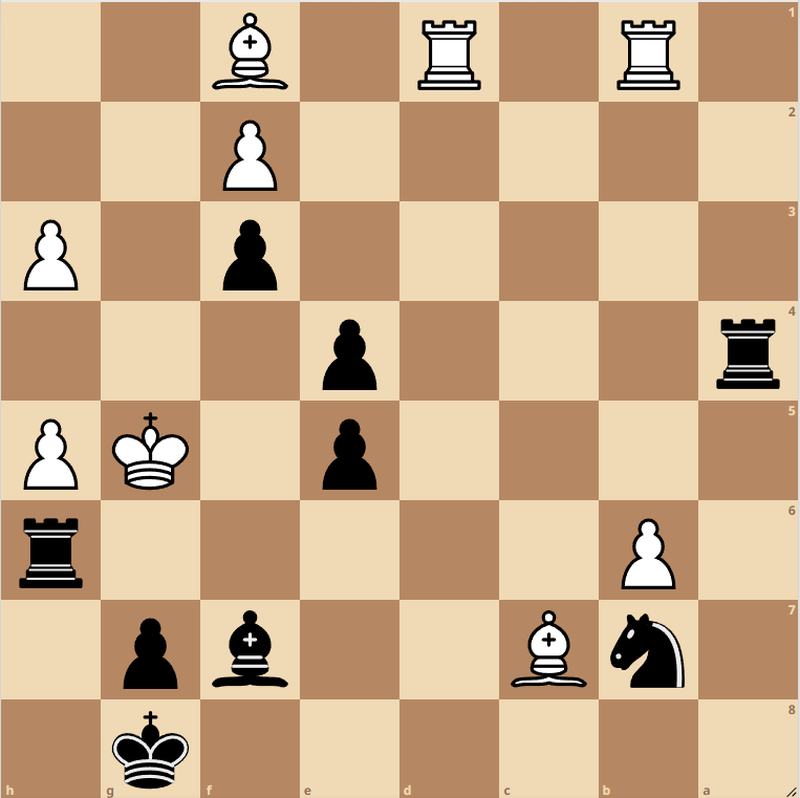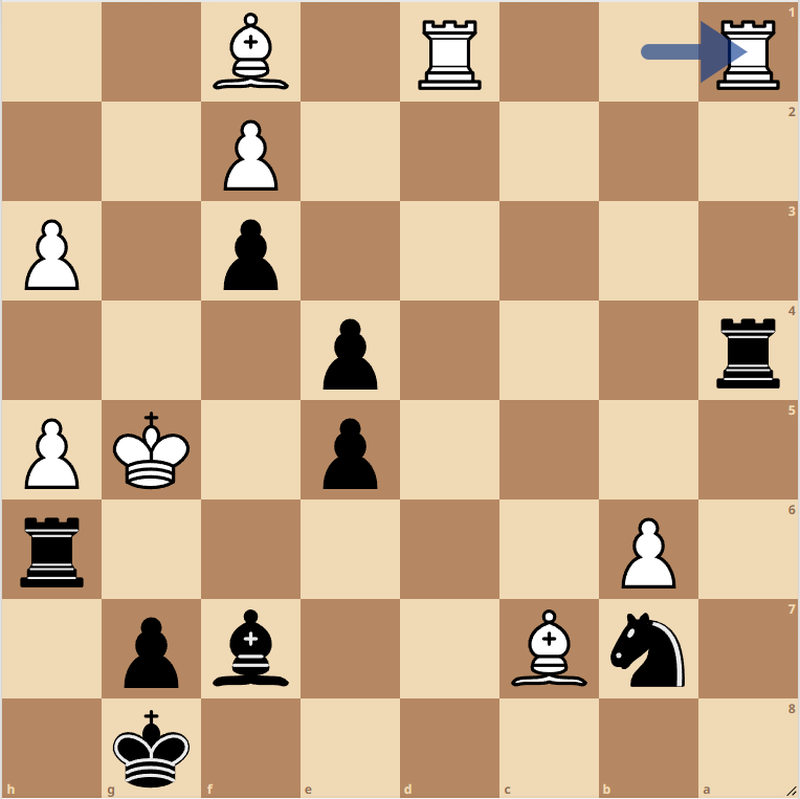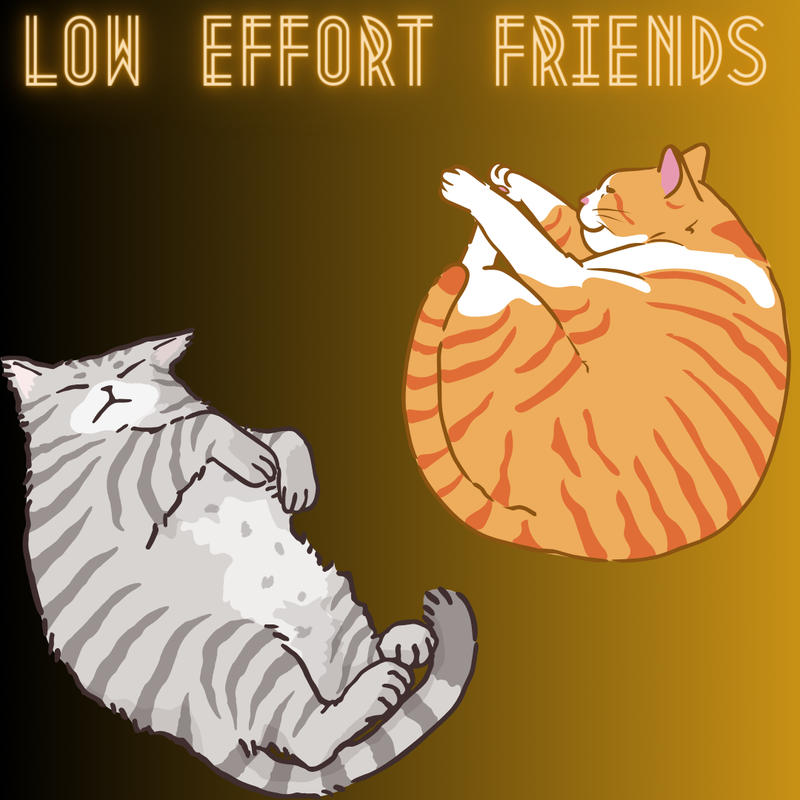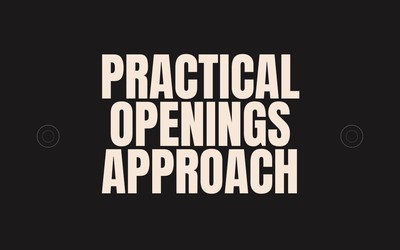
Ryan Velez
Proper Engine Use
Engine DependencyIntended Audience
This article is aimed at people who are struggling to improve, do not have a strategy for implementing engines into their learning plan, or have Engine Dependency.
3 Parts of this Article
1. The 4 Cognitive Rewards Engines Provide
2. Interpreting Engine Moves
3. The Verdict
The 4 Cognitive Rewards Engines Provide
Engines offer 4 rewards that reinforce and renew Engine Dependency:

These 4 rewards are seductive, and offer huge cerebral payoffs for minuscule effort. But these surface level benefits create an illusion of improvement, and cheat us out of personal growth, like kudzu covering a tree. To resist these enticing rewards, you must retrain when and why you turn on an engine.
Mentality Adjustment 1 - Game Time vs Life Time
Engines save time because they make a 40 minute analysis take 10 seconds or less. If you adjust your mentality from “Saving Time” to the more useful “Game Time vs Life Time” comparison, your engine use will be more informing, and helpful. Time spent outside of games (Life Time) impacts time used during games (Game Time):
- Solving tactics during Life Time means spending less Game Time solving tactics.
- Life Time spent learning openings means Game Time saved during the opening.
- Learning the endgame during Life Time means Game Time saved during endgames.
- Life Time spent calculating translates into saved Game Time calculating.
Whenever a chess improver uses an engine to save time, they are actually saving Life Time, but it is during Life Time where you grow as a player. Thus, using an engine specifically to save Life Time will force you to use more Game Time because you are not learning to think for yourself. In other words, frequent engine use undercuts Life Time training, increases Game Time spent on tasks or encourages people to move too quickly during Game Time.
During one of my Wednesday Night Chess meet ups in Louisville, Kentucky, a friend and I played a game and got to this interesting position:

White to move. Do not put this position into an engine yet.
We spent around an hour looking through different variations and subvariations of this position. All of our analysis was based on my opponent’s move 1.Rd8+, and the game gets pretty wild from there. During this hour, we did the following:
- Calculated
- Visualized
- Found new and old tactical patterns
- Found creative ideas
- Considered weird moves like Be2 (to create triple pawns, to stop them easily)
The next day, I put the position to an engine, and discovered 3 things:
- Most of the continuations we checked were correct
- We did not give due diligence to my opponent’s best move
- Rd8+ loses
We definitely came to the conclusion that Rd8 is not good for white. However, the tactical lines for this position are numerous, and not all are obvious. At one point, one of us mentioned an improvement move instead of Rd8. But we never got around to analyzing it, because we had to see if there was a way through the tactical mire after Rd8.
- Because we never analyzed the best move, does that mean we wasted our time?
- Did we fail to grow and learn?
- Should we have begun with turning on the engine?
Because we practiced skills, had meaningful dialogue, and explored tactical patterns for an hour (without a prompt of “mate in 2” or “Pin tactic), the hour was very beneficial. One could reasonably make the argument that we were not finished analyzing the position, but no one can argue we didn’t benefit.
Mentality Adjustment 2 - Shallow vs Deep Curiosity
Engines satisfy curiosity by giving one or more unearned answers for a position. Clickbait works because of the powerful need to satisfy one’s curiosity. Shifting your approach from “Satisfying Curiosity” to the “Shallow vs Deep Curiosity” comparison is more helpful. Immediately turning on a chess engine, and then leaving it on, immediately satisfies shallow curiosity, but often sidesteps the fruits of deep curiosity:

1.Ra1 is an improvement over 1.Rd8+
We could have turned the computer on at the start of the hour long exploration of 1.Rd8+. If we had done so, our shallow curiosity would have been placated:
“Ah, of course! Ra1 challenges Ra4, and threatens to attack Nb7 so we can get the b6-pawn moving again!”
But I have 2 observations about this possible scenario:
1. The move 1.Ra1 is not actually an attempt to challenge Nb7, so we would have been misled.
2. We would have missed out on all of these tactical lines:
Satisfying shallow curiosity leads to incorrect conclusions, and it cheats you out of exploratory learning. Exploratory learning, which is what we did by finding as many tactical lines as we could, improves calculation, visualization, and pattern recognition. Shallow curiosity side steps exploratory learning, which results in more Game Time solving tactics than you would if you satisfied your curiosity more deeply.
I know this will sound weird; however, if you practice resisting clickbait, it will also help you resist turning the engine on so often. This works because the reward is the same: satisfying curiosity. Reflect on the number of times a clickbait article left you feeling annoyed, or the title was extremely misleading. This same thing happens when you switch on the engine, but you don’t understand the moves: you will be left feeling frustrated, and un-helped. If you struggle with a position for a little while, and then turn the engine on after an honest effort, you will at least have some context for the engine’s move — even if the context is “All of my ideas were incorrect.”
Here are some outcome examples of what can happen if you turn a computer on after you struggled with a position:
- It is affirming when it matches your predicted move, because you are right on target.
- If it matches a move you considered, but didn’t select, then you are near the target.
- If it suggests a move you did not consider, then ask why you didn’t consider it?
- If it suggests a move you dismissed, then what did you overlook?
- If it suggests a move you know you would never have considered, why not?
Answering these sorts of questions aids you in satisfying deep curiosity, which is more useful, and beneficial in the long term.
Mentality Adjustment 3 - Truth vs Lies
Engines satisfy disputes. Every single move you make is a decision, and when those decisions become critiqued by others, it can feel like a personal attack. When a person feels attacked in this way, here is what happens:
- They try alternative moves / lines of play to prove their position was better.
- When those don’t work, they try speculative lines hoping for a weird, but good, saving tactic.
- When that fails, they whip out a phone and spin up the chess engine.
- “See?! I was better!! Rf2 wins!”

Using engines to soothe your bruised ego inhibits learning. Relying on an engine to calm your emotional state, and to confirm that you are an intelligent person capable of selecting good chess moves, is unhealthy. Adjusting your mentality from “being right” to the useful comparison “Truth vs Lies,” your engine use will become more helpful. Your mentality should always be about finding, and accepting, the truth. The more deeply you accept this concept, the faster you will improve.
But don’t mistake this advice for suggesting that instant engine use, to get to the truth, is good. It is the search for truth where you will gain and grow. Struggling with a position, learning all of its ins and outs, especially when done during Life Time, is a guaranteed way to improve. Biologists say “Life is struggle,” and that axiom is true in chess as well. The more you struggle with positions outside of a game, the less you will struggle during games. And, when you do need to struggle during a game, you then have practice doing so.
Mentality Adjustment 4 - Low Effort vs High Effort
An engine saves energy because it does all the work, which preserves your mental reserves; but, it does not test your mental reserves, nor does it grow them, because you let it think for you. If we replace “energy” with the comparison “Low Effort vs High Effort,” it becomes more useful.

Low effort friends, who aren't using engines, but are also not improving their game.
Turning on the engine is a low effort action, and low effort actions produce low effort results. Consider the following phrases:
- “I want to turn on the engine so I can put in a low effort.”
- “I don’t want to think, let’s just use the engine.”
- “If I turn the engine on now, I will improve.”
Do these sentences sound like they come from someone who is rapidly improving? They probably sound more like the phrases of someone who failed to read this far, or of someone who only looked at the headers. Using an engine to save “energy,” and to avoid putting in effort, undercuts growth opportunity. From an improvement perspective, if your state of mind is one of low effort, then you will achieve low effort results.
Everyone’s energy levels, and willingness to put in effort, fluctuates. Most people just want to improve, and they are not looking to go pro. Keep in mind that, if your goal is improvement, that high effort benefits you more than low effort. Using the engine 60 low-effort times in a row results in 60 lost opportunities to experience growth.
A simple rule is you should always put in effort before using an engine. Here are some examples:
- Try to come up with an idea of what to do in a position first, then turn on the engine.
- Try to solve the tactical sequence yourself, and try to find all variations, then use an engine.
- Try to determine the correct plan in a situation, then see if the engine’s moves support it.
- Try to find viable balanced moves in an equal position, and then see if you’re correct.
The key word above is “try.” When you lead off using an engine, you are not trying. When engine use comes after you have put in effort, you gain a more meaningful experience. Engines should be used to verify or disprove something you have considered, and not as a thinking replacement.
Interpreting Engine Moves
At a low level, chess positions can be evaluated with Piece Values. At a higher level, people begin to understand Piece Values are actually “Relative Piece Values,” which means the values change based on positioning, and other factors. As your knowledge progresses, the numberless evaluation convention becomes useful because it recognizes positions can be losing even though you have more pieces or material:

The convention ranges from white is winning, better, slightly better and equal to black is slightly better, better, and winning.
In the current era, we use the numberless evaluation convention during Game Time (unlike cheaters, of course), but we use computer evaluations during Life Time. But what do these numbers mean?
Engines provide 3 major resources that require interpretation:
- Evaluation (often called “Eval”)
- Moves
- Average centipawn loss & Accuracy
Understanding how to interpret of these features is important for engine use.
Eval Interpretations
Now we enter a controversial part of my article: me trying to explain the numeric value engines push out. These are general observations based on my experience, and there are likely tons of exceptions to what I am writing. Nonetheless, I will try anyway:
What is an Engine Evaluation?
The evaluation is a number that determines which side the position favors, or if it is equal.
The 0.0 Position
All threats that can be made, by either side, have an answer that doesn’t compromise defense. These also include both stalemate and repetitions.
The 0.1 to 0.4 Position
These positions are still very equal; however, one side might have a slightly easier time creating threats. These threats usually have an answer, but those answers have less counterattacking features, but don’t compromise defense.
The 0.5 Position
At least one error has been made, and accurate play can limit the opponent’s ability to create threats and counterattacks. Three half-pawn errors often creates a losing position.
The 0.75 Position
These positions still demand accuracy from one side or the other. Sometimes, the attacker must be more accurate, and other times it is the defender who walks on eggshells. Regardless, these positions give a quarter-pawn eval cushion, which means inaccuracies and some mistakes can be weathered without losing your edge. Larger errors still subvert the eval.
The 1.00 Position
These positions are on the brink of being winning positions. Multiple errors have occurred by this point, and the attacker often has something to boast about: space, some weak pawns to target, more activity and development, etc...
The 1.5 Position
Often, an eval this large is winning, but the win might be difficult for many to exploit. It may require some sort of technical knowledge. Some 1.5 positions are easier to win than others, and can be very technique-dependent.
The 2.0 (or more) Position
These positions are winning. Sometimes, the advantage is clear and easy to convert. Other times, the advantage is difficult to exploit.
The 10.0 (or more) Position
Once you have more than a queen’s worth of eval, you can afford to make large errors and still be winning, most of the time. This is when centipawns and accuracy start to become compromised, too, as making a move that loses 300 centipawn doesn’t matter when you’re still winning by 7 points.
Forced Mate Positions
Positions with a forced checkmate are always winning, but still require skill to pull off. The longer the checkmate line, the more skill that is required to pull it off.
Move Interpretations
When multiple engine moves are equivalent, how do you pick for your analysis?
Moves that do not compromise defensive capability but make threats are worth considering. If you are unable to understand, at your current level, the number of attacking possibilities a move yields, you can make moves that offer your pieces larger scope and board influence.
When material is equal, but the engine eval is lopsided, how do you know what to do?
In these scenarios, something usually stands out for the winning side. Maybe they control the only open file, perhaps there is a well placed and supported knight, or maybe there is a large number of kingside attackers and a dearth of kingside defenders. Moves that support the strength, or oppose it, are often the way to go.
When one move is winning, one is equal, and the rest are losing, what does it mean?
These positions are always interesting, and represent critical moments. A critical moment is usually marked by a requirement that must be met, or the eval will drop for that side.
When all moves mean you are losing, what does it mean?
It simply means you are losing. However, the one thing your opponent can never take away from you is your ability to try to find the best move. Therefore, when evaluating a game you played, try to find the best move, even when losing, and evaluate it later.
Average Centipawn Loss & Accuracy Interpretations
If you wish to know more about accuracy and average centipawn loss, here are 2 sources who know more about the technicalities than I do:
Personally, I find average centipawn loss to be a little more useful of a measurement because it lets me know how many fractions of a pawn I am giving away per move. A simple comparison is using relative piece values: do you think a knight is worth 3 points or 3 pawns? Certainly a relative value of 3 pawns is conceptually more useful.
The Verdict
Engines are Good
Engines are like calculators in math class. Yes, you can use them to find the answers. But you must learn to think without them, because you cannot use them during a game.
Some Platforms Auto-Analyze Games
You can disable auto-analysis on chess.com in the “Live Game” settings. Definitely use their analysis tools after you have spent time going through the game yourself.
Verify, Refute, Challenge
Engines are best used to verify, refute, or challenge a decision you have made (ie: a move you selected). Engine Dependency is often sparked when you use engines to prove you were right or wrong as opposed to searching for the truth of the position.
When can I use engines all the time?
There are 2 signs you are ready to use an engine regularly:
1. Most of the time, you understand an engine’s suggestion
2. When you don’t understand its suggestion, with a little effort, you can figure it out
It’s just like the calculator and math example: someone who has a strong understanding of math can see the solution to something and understand how that came to be. They can infer the steps needed that it took get to that answer. Chess engines are exactly the same — if you cannot understand how or why an engine’s suggestion came to be, then you need to struggle with positions more often, learn more patterns, and learn more bold-faced chess terms.
How can I get to the point of understanding the Engine’s move?
Pattern recognition and bold-faced chess terms. When you learn tactics, you learn tons of themes, and then tons of patterns. When you learn about positional chess, you learn a lot about non-tactical piece placement, and all associated terminology for describing any position’s features. When you learn openings and middlegame, you learn strategies and plans. When you learn endgame, you learn patterns and scenarios. A basic understanding of the bold-faced terms associated with chess enables you to piece together the purpose of an engine’s suggestion.
Put in Effort
The big theme in this article is effort. The instant gratification engines provide always delays growth for people trying to climb the rating ladder. Engines are a tool improvers abuse, and improvement comes faster when you learn to think on your own.
Support
The Lichess Approach
I take the Lichess approach to support: my content is free, and support helps me keep going. If you cannot support me, that is fine. But if you agree I am creating high-value content, and that it is nice my articles are not half-measures behind a huge pay wall, consider supporting me.
My patreon asks for $5 a month. If I get 100 supporters (I am at 3/100), I will begin streaming, too. My goal with the Exploring Chess article series is to answer questions beginners have. This article was the product of a Lichess user asking me a question.
Liking my articles and sharing them also supports me. It is motivating to see people enjoy what I write, and this is a non-monetary way to help. But if you don’t want to, that is fine too.
Additional Related Reading
At the end of my articles, I try to recommend other things based on the topic (not always my own stuff). The more you read up on stuff, the more you will know:
- My Article - Layered Analysis: How to Analyze Your Games
- My Article - The Win-Loss Spectrum
- Lichess Article - Accuracy
- Lichess Recommended Article - Centipawns Suck
- Daniel Bernoulli’s Article - How does a chess engine work in detail?
More blog posts by RyanVelez

Practical Openings Approach
This post is for people who need to learn openings, but struggle.
Resigning Strategy
This article is for anyone who wants to understand the strategy of resigning, at both low and high l…
I want to improve, but I'm busy !!!
This article is for people who want to improve but are busy, and for anyone who wants to know how to…